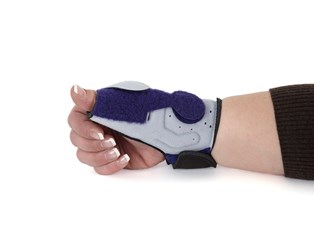Carpal tunnel syndrome is a condition in the hand and wrist that is usually caused by a pinched nerve. This nerve, starting in the hand and going through the wrist area, is called the median nerve. Pressure on the nerve can cause tingling, numbness, and weakness. It can be brought on by a variety of causes. The following information discusses how carpal tunnel syndrome is diagnosed, tests and procedures used to determine a diagnoses, and treatment options that are currently available.
How is carpal tunnel syndrome diagnosed?
There are several ways that physicians may diagnose carpal tunnel syndrome. They may start by reviewing not only the symptoms you're having but the timing of the symptoms as well. There are sometimes underlying medical issues that could be causing the problem. Both thyroid disease and certain types of arthritis could be underlying conditions. A physician would need to rule out any other possible medical conditions before making a diagnosis. Sometimes a primary physician can diagnose carpal tunnel. You may, however, be referred to an orthopedic surgeon. A diagnosis is usually made after a doctor evaluates your symptoms and then completes one or more of the following tests and procedures.
What tests and procedures are used?
A doctor may determine that you are suffering from carpal tunnel syndrome by conducting a few simple tests. Thumb weakness is one sign of carpal tunnel. The doctor may ask what you do when you're experiencing pain or tingling. If you respond by shaking your wrist as if you're shaking a thermometer, this is a strong indication of carpal tunnel. Another symptom includes the inability to distinguish between one or two sharp points on the tips of the fingers. This last symptom is often a sign of more advanced carpal tunnel syndrome.
Another test a doctor may use in determining carpal tunnel is an electromyogram. This test is administered by inserting a type of small needle with an electrode into certain muscles. This will measure electrical activity in muscles when they're resting and contracting. Another procedure that may be used is studying nerve conduction. This involves placing electrodes on the hand or wrist. After tiny electric shocks are given, the speed of nerve impulses is measured.
How is carpal tunnel syndrome treated?
There are several options for treating carpal tunnel. One of the nonsurgical methods can include putting a splint on the wrist. This will help keep your wrist from moving around, especially when you're sleeping. Cortisone injections may also be used; this is a type of steroid that can relieve pain and inflammation in the wrist. If nonsurgical methods fail to alleviate the condition, surgery may be necessary. Surgical techniques usually involve cutting the ligament that is pressing against the nerve in the wrist area. This can be accomplished through open surgery or by use of an endoscope.



